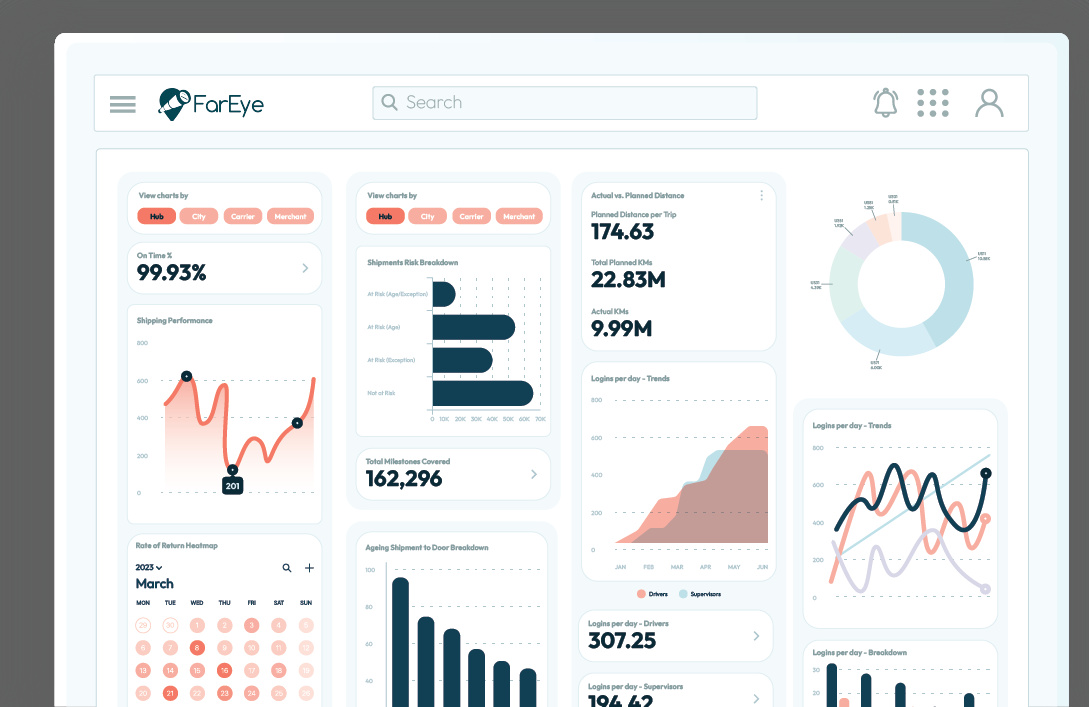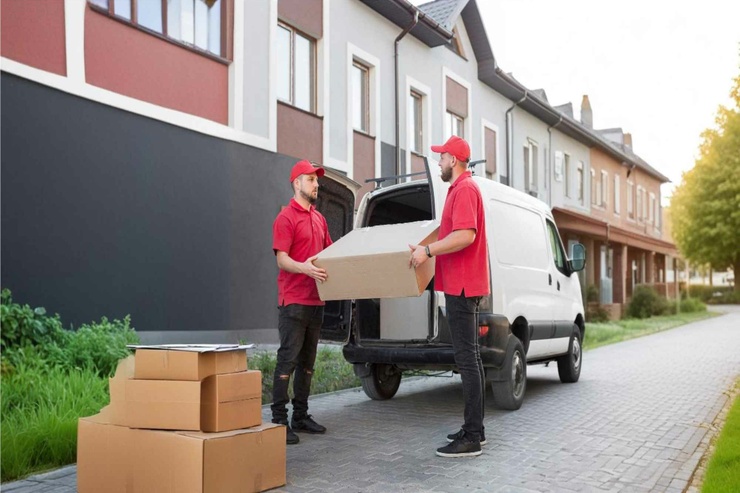- Last-Mile
How to improve last mile experience
What is the significance of Last Mile Experience?
In 2023, eCommerce contributed to 20% of total retail sales. By 2026, this is set to become 24%. With nearly a quarter of all retail sales shifting to eCommerce, it will be worth about $8.1 Trillion. The game no longer is whether offline or online is the way forward but how much market share in online is a business going after. In a world of unending choices and new brands coming to the fore each day, the differentiator is largely the last mile experience. To thrive in a highly competitive and growing market, brands need to ace the last mile. This is important because there are many competitive alternatives and a lot of opportunities would otherwise be left untapped.
Acing the last mile experience can give businesses significant competitive advantage and ensure that their run in this burgeoning mode of commerce is long enough.


Challenges in Last-Mile Logistics
Some key challenges that are plaguing last mile logistics are:
1. Shrinking SLAs
The delivery windows are shrinking with the increasing need for faster deliveries. To stay competitive, brands need to figure faster ways to get their orders reach their customers. Customers are increasingly expecting same-day deliveries and this puts immense pressure on businesses to keep up with the expectation.
2. Rising cost of deliveries
With rising fuel costs and driver wages, further escalated by driver shortages, their cost to deliver products is constantly increasing. In addition, customers expect free deliveries which further add to the cost. Furthermore, if the right systems to ensure effective utilization of available drivers and maximize their productivity, that would contribute to the costs significantly too.
3. Failed Deliveries
WIth the pressure of shrinking SLAs and increasing costs, if for some reason customers are unavailable or aren’t reachable on-time, then it is a failed delivery. It doubles up the cost, effort and the complexity. If a delivery fails because of missed SLAs, there is a high chance of losing the customer and it is more likely because statistics show that 33% customers cut ties with the brand after a single bad experience. On the other hand, loyal customers typically stand a 57% higher chance of spending more.
4. Anticipation Anxiety
Getting the right kind of visibility at the right time and proactively informing customers of order statuses is another challenge. Failure to do this will result in increased anticipation anxiety that will result in where-is-my-order calls. It also deteriorates the customer experience.
Understanding last-mile complexities
While looking at the journey of a product from manufacturing to being delivered to its end customer, there are several legs. Out of all these legs, the last-mile is generally typically said to be the shortest. Yet, that is the one with more complications even the mid and the first mile sometimes. The reason for that is also the SLA pressure and shrinking windows of delivery in the last-mile.
In addition, here are some of the factors that add to the complexity:

Customer Expectations
With a massive boom in eCommerce, customers are getting increasingly accustomed to online buying experiences. With increasing competition, a lot of businesses work on the delivery experience as a core differentiator. This manifests in different forms such as free-deliveries, before-time deliveries, on-time deliveries, flexible deliveries and several more. This has accustomed customers to have high expectations from brands even if they are new and nascent. Instant gratification is the norm now and the following are basic expectations from all brands for consumers.
1. Timely Deliveries
On-time deliveries are a bare minimum expectation that customers have on brands. A single delayed delivery is enough to motivate customers to leave a brand for competition. At times, it also leads to missed deliveries due to unavailability of customers beyond the delivery date or time that they are promised. This creates new complexities like rescheduling them again, not to mention, deep customer dissatisfaction.
2. Real-time Tracking
To mitigate anticipation anxiety for customers, it is important to give them real-time tracking of their orders. Furthermore, to ensure SLAs are maintained and performance of delivery staff is upheld, instant real-time visibility with live-status tracking is important for the brand. This would make sure proactive identification of any delays and communicate them to customers.
3. Delivery Window Flexibility
Customers love choices. When this extends to even allowing them to choose their preferred delivery timings, it can be a key reason that they want to stick with the brand. In that case, delivery operations need to be tied to them and SLAs should be met every single time to retain customer trust. To further empower customers, some businesses also offer changing the delivery date and time midway through the process. This gives even more flexibility to the customers but can be a logistics nightmare if not handled well.


B. Traffic & Routing Challenges
Even with great planning, oftentimes, delays are caused due to factors related to local conditions such as traffic.
1. Urban Congestion
Unanticipated traffic jams and congestions can impact delivery times. This not only increases idling time and fuel costs but also has a domino effect on SLA adherence for subsequent parcels too. With the need for increasingly fast deliveries, congestion on roads can dampen the pace.
2. Variable Traffic Conditions
Sometimes, the traffic conditions change when one does not expect it to. This can also offset delivery times and mar the delivery experience, especially when the order is delayed. To calculate ETAs and routes with the awareness of local conditions could make a significant difference.
In some scenarios, there could be vehicle movement restrictions and that is essential to factor in at the time of promising SLAs to customers.
3. Optimal Route Planning
Assigning the right drivers to the right areas and getting the sequencing right are some of the ways to shape a good experience for consumers as part of the last mile. This can also help reduce delivery costs.
Read about the trends that will impact the last mile in 2024

Leveraging Technology For Improvement
Overview of FarEye
As online buying grows, the need for the right tools in place grows as well. Businesses typically turn to these technology solutions to tackle the complexities and attempt to scale themselves.
The FarEye Platform
The FarEye platform has several solutions that businesses can leverage to shape the last-mile experience. It is a scalable platform that has a proven track record of handling large volumes of deliveries for global brands. Here is a set of features that can particularly help in
Real-time Visibility
Real-time visibility of orders is essential for dispatchers to step in and intervene when things don’t go as per plan. This is critical to ensure on-time deliveries which affect customer experience in the last mile.
On the other hand, customers expect a predictable delivery experience and this can be achieved by giving them order status updates proactively. Yet again, visibility becomes a crucial factor in being able to provide them with that kind of visibility. With the driver app and live order tracking, this can be achieved. FarEye’s driver app also facilitates seamless and secure communication with customers.
Predictive Analytics
With FarEye, businesses can forecast order volumes. This helps prepare for demand surges and provision fleet capacity. It also helps in promising delivery times based on math rather than guess-work. This ensures that realistic SLAs are committed to customers and meeting them is critical to ensuring a good customer experience.
Automated Route Planning
FarEye has advanced ML-driven route planning & optimization capabilities. This also leverages the driver’s familiarity within a territory paving way for faster delivery of orders. The ability to assign ad-hoc orders and still meet SLAs is a special feature that sets FarEye apart and this is a major influence in shaping the experience for customers.
Dynamic Scheduling
FarEye offers the ability to provide customers with slot selection to pick their preferred time of delivery. This offers flexibility to customers and also helps the dispatchers schedule deliveries according to customer’s preferences. There is also an option for customers to change this or provide special instructions. This customer-centric approach fosters a positive last mile experience.

Measuring & Analyzing Success
To measure the effectiveness of the measures to build positive customer experience, businesses have 2 major KPIs. These are indicators of success or failure of the last mile experience. It provides an opportunity to take corrective steps and improve operations to translate into a good customer experience in the last mile.
1. On-time Deliveries
This is a non-negotiable KPI. An increase in on-time deliveries is a direct indicator of good processes in place to execute deliveries. They also guarantee a certain amount of trust for the brand in the minds of customers.
2. Customer Satisfaction Scores or NPS
Of all the steps involved from the time of ordering to the time of delivery, the last mile experience is what is prone to most anxiety. On the other hand, when rightly handled, it can turn into a huge advantage for the brand. This greatly determines the customer satisfaction ratings. These are a direct indicator of the last-mile experience.


Conclusion
The importance of the last mile experience in today’s context and also for the near future is only set to increase. Businesses need the right set of tools and technology solutions in place to make the last mile delivery experience one of their key strengths and differentiators.

Komal Puri is a seasoned professional in the logistics and supply chain industry. As the AVP of Marketing and a subject matter expert at FarEye, she has been instrumental in shaping the industry narrative for the past decade. Her expertise and insights have earned her numerous awards and recognition. Komal’s writings reflect her deep understanding of the industry, offering valuable insights and thought leadership.
Let's Talk to Our Experts and Optimize Your Deliveries Today!
An expert from our team will reach out within 24 hours



